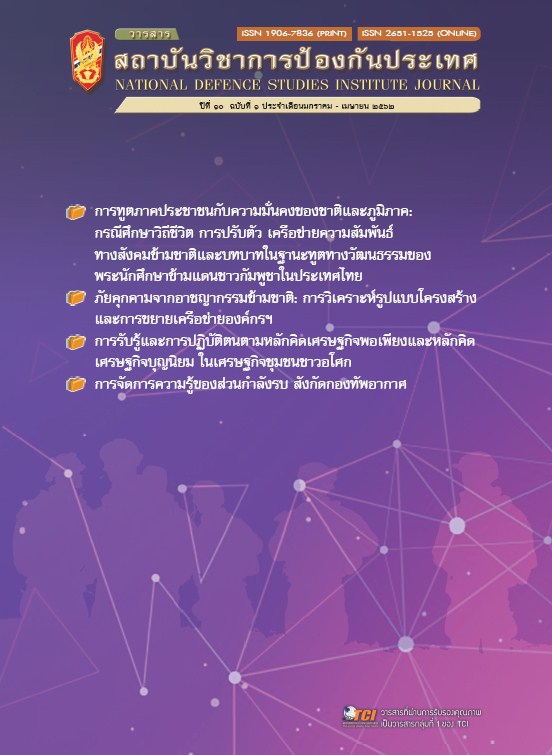Transnational Crime: An Analysis of Structural Form and Network Expansion of Russian Mafia
Main Article Content
Abstract
The objective of this study is to present the phenomenon to expand the network of transnational organized crime: the Russian Mafia, structural form, their motives for committing a crime, behaviors and patterns of crimes involving the Russian mafia in Thailand, as well as the means to solve the problem of crime. As a result of Russian organized crime or Russian mafia has expanded their networks into countries in various regions. It is considered a new threat to state security which is not limited in time, space and patterns of crimes. By developing a variety of crimes, and supporting to carry out illegal activities that encourage them to obtain enormous revenues. It is based on the cause of the offense, which consists of the use of cause and effect. Furthermore, the Russian mafia also has connections with transnational organized crime and multi-national corporations. This is an important factor in contributing to expand network operations and open up an opportunity for committing a crime. The objective of seeking economic benefit is significant. The Russian mafia has used various tactics to commit a crime as the causes of panic attacks. And also they used advanced technology as a part of the tool in their crimes.
Article Details
References
สุมนทิพย์ จิตสว่าง และคณะ.(๒๕๕๘).การจัดการความรู้เกี่ยวกับการป้องกันปราบปรามแก๊งอาชญกรรมข้ามชาติที่ก่อเหตุ
คดีเกี่ยวกับทรัพย์ในกรุงเทพมหานคร. สำนักงานกองทุนสนับสนุนการวิจัย.
Clarke, R., & Cornish, D. (1985). Modelling offender's decision: A framework for research and policy
in Crime and Justice (An Annual Review of Research). Chicago: University of Chicago Press.
Freeze, L., G. (2002). Russia: A History. New York: Oxford University Press.
Frisby, T. (1998). The rise of organized crime in Russia: Its roots and social significance. Europe-Asia
Studies, 50(1), 27-49.
Ghemawat, P. (2007). Redefining Global Strategy: Crossing Borders in a World Where Differences Still
Matter. Boston: Massachusetts.
Osipov, G.V et al. (1994). The Reform of Russia: Myths and Reality (Moscow: Institute of Socio Political
Reseach).
President’s Commission on Law Enforcement and Administration of Justice. (1968). Organized Crime.
New York: Avon Book Co.
Rawlinson, P. Criminal Heirs. (1998). Crime And Russia's Youth in Gangs & Youth Subculture:
International Exploration. New Jersey: Transaction Publishers.
Serio, J. (1992). Organized Crime in the Soviet Union and Beyond. Low Intensity Conflict and Law
Enforcement, 1(2), 142-145.
Sukharenko, A. (2004). THE USE OF CORRUPTION BY “RUSSIAN” ORGANIZED CRIME IN THE UNITED STATES.
Trends in Organized Crime, 8(2), 123-124.
Varese, F. (2001). The Russian Mafia: Private Protection in a New Market Economy. Oxford: Oxford
University Press.
Varese, F. (2012). How Mafias take advantage of Globalization: The Russian Mafia in Italy. British Journal
of Criminology, 52(2), 235-253.
Williams, P. (1997). Introduction: How Serious a Threat is Russian Organized Crime. Russian ORGANIZED
CRIME: THE NEW THREAT, 1(11), 32-45.

